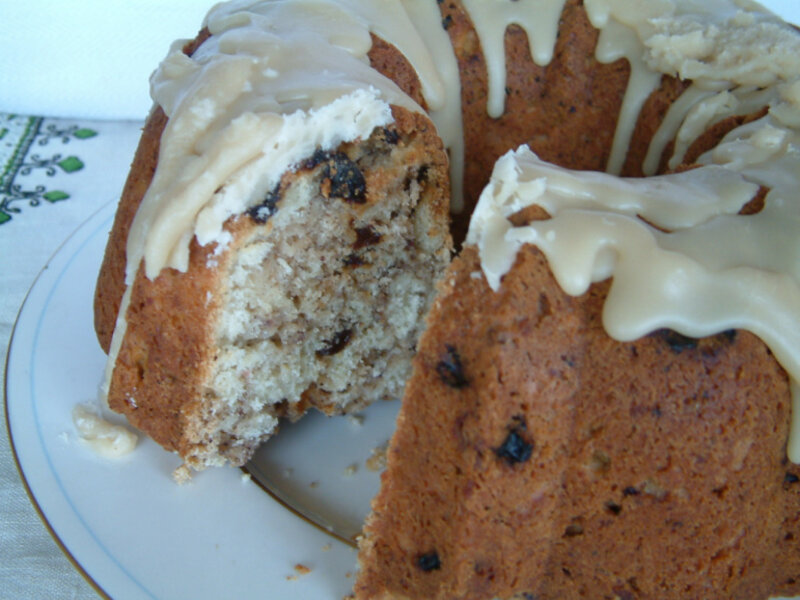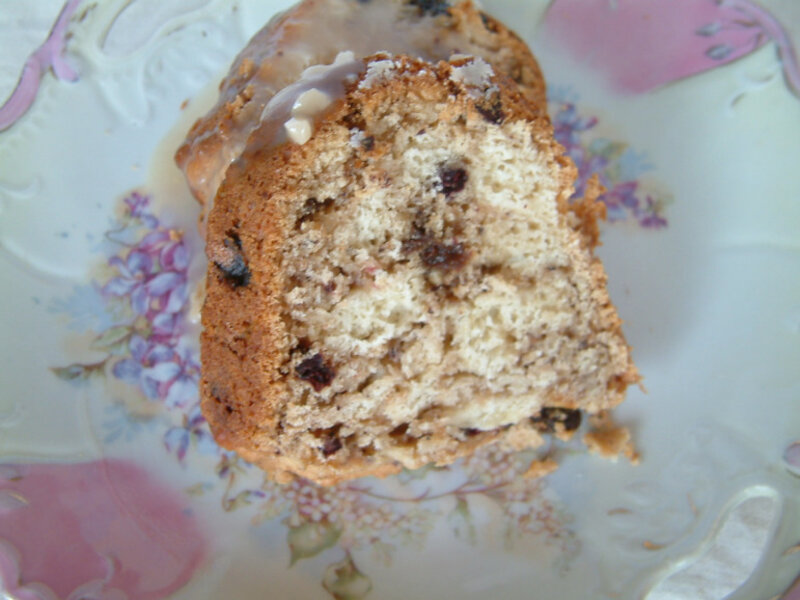Election Cake: An American tradition
Loading...
The first known recipe for Election Cake, one of the first foods to be identified with American politics, was published as early as 1796 in Amelia Simmons’ “American Cookery” cookbook. In the 1800s, the cake was served at election time and by the 1830s it had became popularly known as Hartford Election Cake.
Election Cake actually tastes more like a fruit bread, similar to an English fruit cake, but not as dense. Its purpose is to fortify, not serve as a sweet finish to a meal. In fact, these cakes were originally known as “muster cakes,” prepared and packed for farmers when they left the fields to travel into towns for military training or “mustering.”
Do you know why Election Day is held on a Tuesday in November?
Washington staff writer Peter Grier for CSMonitor.com explains, “For a society in which most people lived on farms, November was a good month to vote. The harvest was in, and snow hadn’t yet closed the roads. Why Tuesday? Records of lawmaker debate show that officials thought Sunday wouldn’t work, because many people were in church. Monday wouldn’t work, because most polling places were in county seats, and folks from outlying areas could not always get there in time.
“Tuesday was the earliest day everybody could make it into town. So Tuesday it was. Congress similarly standardized congressional elections in 1872.”
So, like militia training, farmers would head into town for a few days for electioneering, to vote, hang out at the tavern, and wait for the results. The women, who wouldn’t win the right to vote until Aug. 26, 1920 with the passage of the 19th amendment, stayed on the farm.
Sometimes Election Cake was sold at church suppers proceeding the election, or it was sold at polling stations. In 1830 in Hartford, Conn., Election Cake was given to every man who voted a straight party ticket. And the name “Hartford Election Cake” stuck when every household in Hartford would prepare a cake to serve to out-of-town guests. You can read more about that here.
I bought a bundt pan to make the Election Cake recipe from “The American Heritage Cookbook.” As you can see, I didn’t quite master the dripping of the Milk Frosting. I ran into trouble when I tried to pour multiple layers as the frosting was hardening. Oops! I’m not sure I will ever master attractive frosting.
I’m relieved to report that the frosting still tastes delicious and so does this Election Cake. It is thick and doughy, with a hint of raisins, and it makes a delicious spiced aroma as you bake it in the oven. I think it would make a lovely afternoon tea cake, even when the polls are closed.
Election Cake could be just want you need to survive a long night of election returns. Just think, on Wednesday the political ads will be finished!
(See next page for recipe)
Election Cake
From “The American Heritage Cookbook”
Step 1
1 medium-size potato
1 cup milk
1-1/2 tablespoons sugar
2 tablespoons shortening
1/2 package active dry yeast
1 egg, well beaten
3-1/2 to 4 cups sifted all-purpose flour
1 teaspoon butter, melted
Cook potato in boiling water until tender. Drain, peel, and work through a sieve or ricer, then set aside. Scald milk. Pour into a large bowl and stir in salt, sugar, shortening, and potato. When lukewarm, stir in yeast until dissolved. Add egg, then flour, a little at a time, to make a soft but still manageable dough. Turn out on a floured board and knead until smooth and elastic. Place in a greased bowl, brush with a little melted butter, cover with a tea towel, and put in a warm spot to rise. Let rise until a little more than double in size.
[Tip: Set your oven to "Warm" while you are mixing the dough. Then, turn the oven off and set your tea-towel covered bowl into the oven as a warm place to help your dough rise.]
Step 2
3/4 cup (1-1/2 sticks) butter
1 egg
1-1/4 cups light brown sugar, firmly packed
1/2 cup sherry [I used cooking sherry]
1 cup seedless raisins, chopped [I add some dried cranberries so I threw those in, too]
1 cup all-purpose flour, sifted
1 teaspoon ground cinnamon
1/4 teaspoon ground cloves
1/4 teaspoon ground allspice
1/4 teaspoon ground mace
1/4 teaspoon ground nutmeg
1 teaspoon salt
When yeast dough has risen sufficiently push down the dough with your fix and work in butter thoroughly (I used a mixer with dough beaters). Toss the raisins with 2 tablespoons of the flour. Then using your hand as the mixer, stir in the egg, sugar, raisins, and remaining flour sifted with the spices and salt. Pour into a large greased Turk’s-head or gugelhupf mold or 10-inch tube pan, filling pan only two-thirds full. Cover with a tea towel and let rise about 1 to 1-1/2 hours in a warm place. Bake in a preheated 325 degree F. oven for 50 to 60 minutes. Cool about 10 minutes, then turn out of the pan, and cool completely before frosting.
Milk frosting
1-1/2 cups sugar
1/2 cup milk
1 teaspoon butter
1/2 teaspoon vanilla
Combine sugar, milk, and butter in a saucepan. Cook, stirring constantly, until mixture begins to boil. Then boil, without stirring, until a few drops tested in cold water form a soft ball. Remove from the heat, stir in 1/2 teaspoon vanilla, and beat until frosting is of a spreading consistency. Spread over top of cake, letting it dribble down the sides. If frosting becomes too stiff to spread, melt in top of double boiler over boiling water, then beat again.







